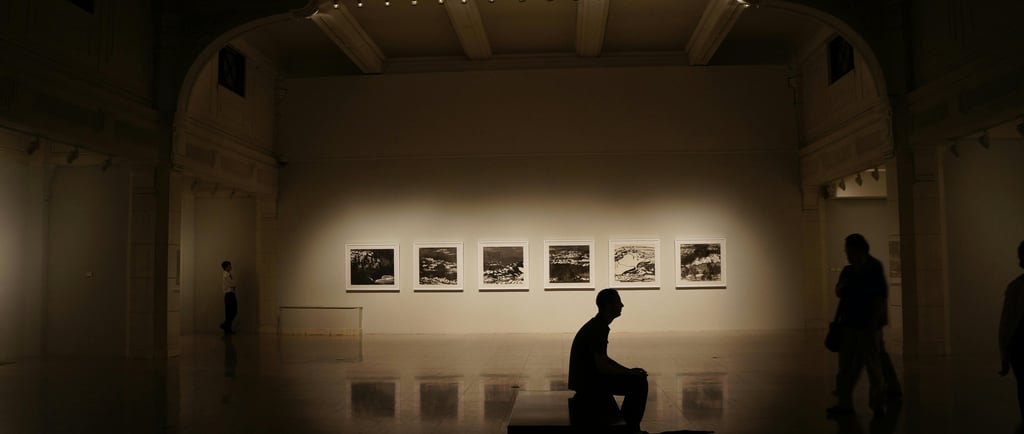Curate Like Museum Professionals
Learn how to curate travel experiences like museum professionals. This guide for travel agents explores emotional storytelling, sensory design, and must-have travel agent tools to create deeper, more meaningful itineraries.
6/24/20253 min read


Introduction
In today’s highly personalized travel market, travel agents are no longer just booking hotels and flights—they’re designing experiences. And to do that exceptionally well, they must borrow a page from another profession that thrives on immersive storytelling and purposeful presentation: museum curation. Learning how to think and plan like museum professionals is one of the most valuable travel agent tools available today.
This article explores the principles of museum curation and shows how travel agents can apply these methods to build more meaningful, emotionally resonant, and memorable travel experiences. We’ll cover curation theory, storytelling structure, sensory design, flow management, and the long-term benefits for both agents and their clients.
What Museum Curation Teaches Us About Travel Design
Museum curators are not simply organizers. They are experience designers. They build entire emotional journeys using objects, lighting, sound, and layout to shape how visitors feel from one moment to the next.
Likewise, the best travel agent tools should help travel agents craft trips that:
Tell a coherent story
Elicit emotion and awe
Use pacing and flow deliberately
Blend education with entertainment
Inspire personal reflection
By adopting these curation techniques, travel agents can shift from being service providers to transformation facilitators.
Core Curation Concepts Travel Agents Should Adopt
1. Theme Before Tactics
Museum curators begin with a unifying idea. Every object selected must serve that narrative. In travel, this means designing an itinerary that starts with a core emotional theme—such as renewal, connection, or creativity—and ensuring every stop supports it.
Example: A client wants to feel creatively recharged. Instead of defaulting to a Paris-Rome-Barcelona route, the agent curates a journey through artist colonies, studio visits, and hands-on workshops in places like Essaouira, Oaxaca, or Hoi An.
Using travel agent tools like mood boards, digital maps, and storytelling prompts can help align the trip with the theme.
2. Emotional Pacing and Journey Flow
Museum exhibits don’t hit you with everything at once—they build. There’s an arc. Travel agents should plan trips in the same way.
Begin with wonder: Introduce the client to a striking new landscape or cultural moment.
Deepen the narrative: Incorporate emotional resonance mid-trip with personal stories, local interaction, or shared meals.
End with reflection: Finish the journey somewhere quiet or spiritually meaningful.
Travel agent tools that assist with visualization and itinerary pacing can enhance this design process.
3. Design for the Senses
Curators use soundscapes, lighting, color, and texture. Travel agents should too. A truly immersive trip touches all five senses.
Taste: Street food tours or cooking classes
Sound: Traditional music, ambient nature
Smell: Spice markets, lavender fields
Sight: Sunset spots, artisan studios
Touch: Pottery, fabrics, walking barefoot on ancient stone
Using travel agent tools to log sensory touchpoints helps ensure an itinerary is multidimensional.
4. Interpretive Materials for Deeper Meaning
Curators provide context through signage, audio tours, and guides. Travel agents should provide their own versions: destination prep guides, cultural etiquette briefings, themed journal prompts, or book and movie recommendations.
These preparatory resources—often overlooked in basic booking platforms—set the tone and deepen client appreciation. Travel agent tools like automated email sequences or digital welcome kits make this scalable.
5. Room for Serendipity
The best museums allow for free wandering. Likewise, travel itineraries shouldn’t be jam-packed. Leave intentional space.
Create curated blocks of unstructured time in locations chosen for their charm, safety, or cultural density. Use maps, app suggestions, or even handwritten local notes to guide without controlling.
Travel agent tools that help manage flexible scheduling while maintaining thematic integrity are crucial here.
How This Benefits Travel Agents
Creates Differentiation: Travel agents using museum curation frameworks stand out from generic booking services.
Builds Deeper Client Loyalty: Emotional, personalized trips lead to repeat business and referrals.
Improves Reviews and Testimonials: Clients remember how a trip made them feel. Curation creates more of those moments.
Raises Perceived Value: People will pay more for thoughtfully crafted experiences than for plug-and-play packages.
Boosts Creative Satisfaction: Agents become designers, not just brokers, which makes the work more fulfilling.
How This Benefits Travelers
More Meaningful Memories: Thematic travel helps people internalize experiences rather than just consume them.
Personal Transformation: When a journey is designed around emotion and growth, it sticks with the traveler long after.
Better Stories to Share: Instead of just photos, travelers come home with real narratives.
Increased Confidence: When given cultural and emotional context, clients feel more prepared and empowered.
Tools to Help Travel Agents Curate Like Pros
To apply these principles, travel agents should use:
Visual itinerary builders
Digital travel mood boards
Travel storytelling frameworks
Custom client prep packets
Reflective travel journals
Flexible booking and feedback tools
These travel agent tools enable more artful, human-centered trip design.
Conclusion
Travel agents who think like museum curators elevate the travel experience into something transformative. By focusing on flow, emotion, sensory depth, and narrative integrity, they create journeys that clients will never forget.
In a world saturated with transactional tourism, curation is the edge. It’s also the heart. And it’s a critical evolution in the growing toolkit of modern travel agent tools.
We Offer Free Design Samples
Improve your travel agency with our pre-travel preparation tools
